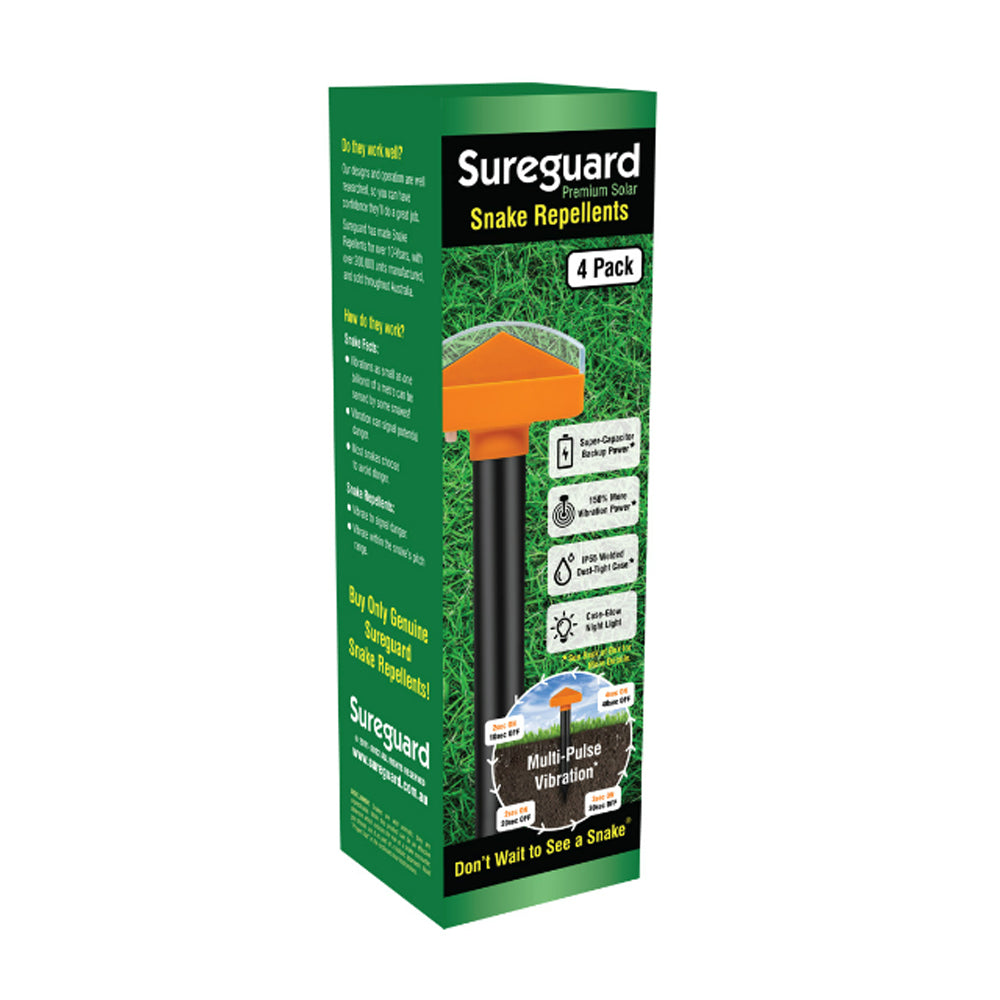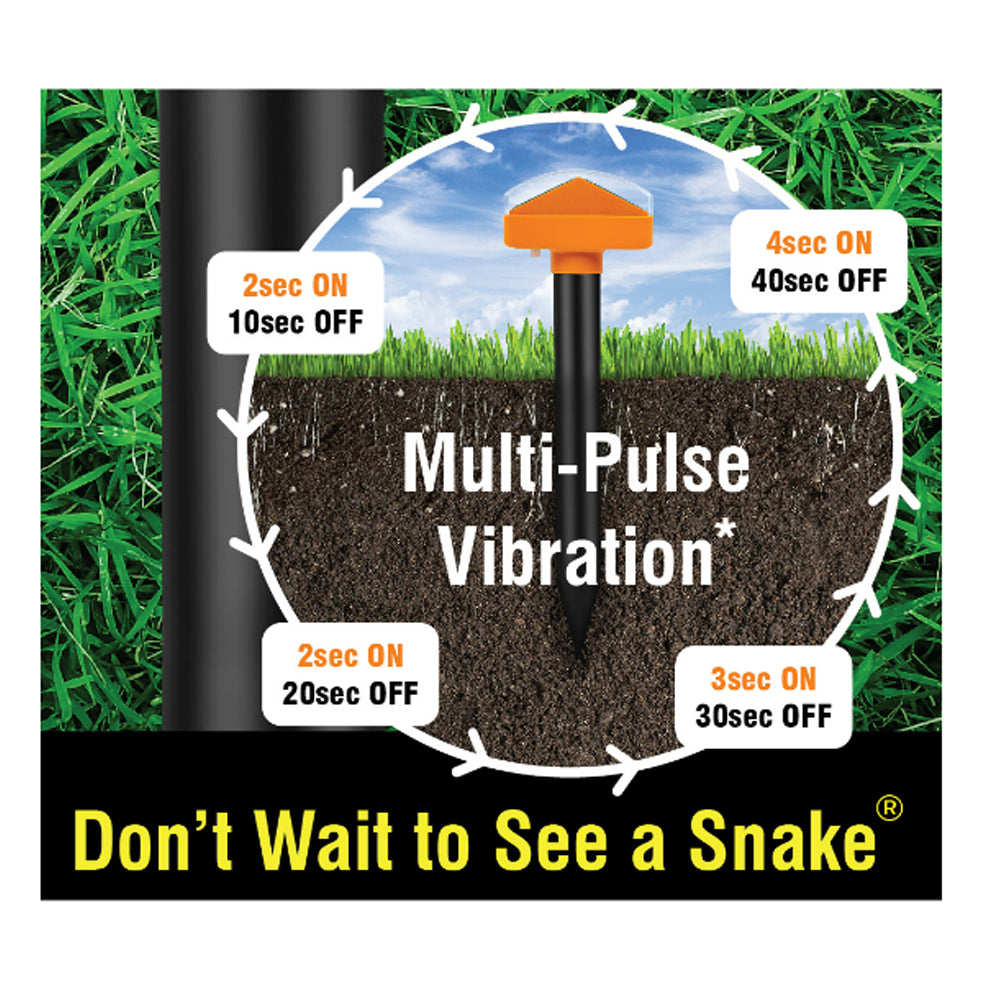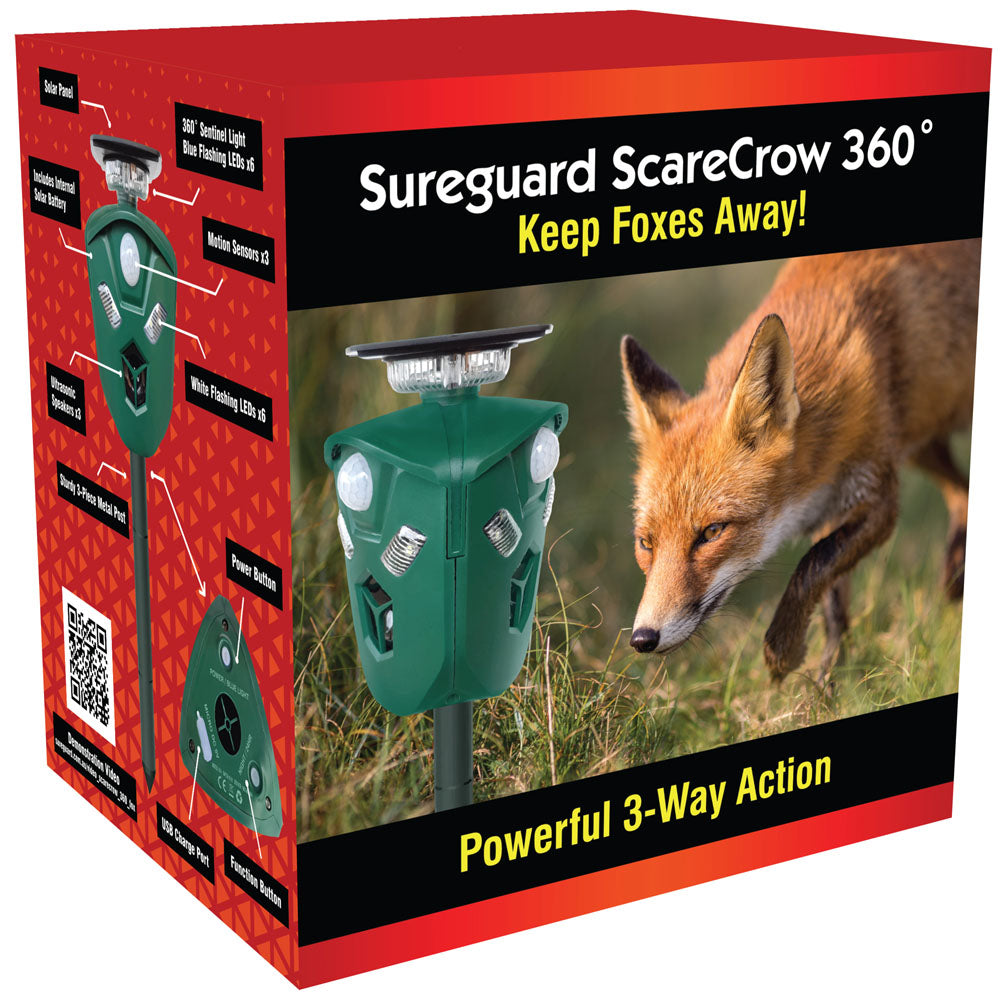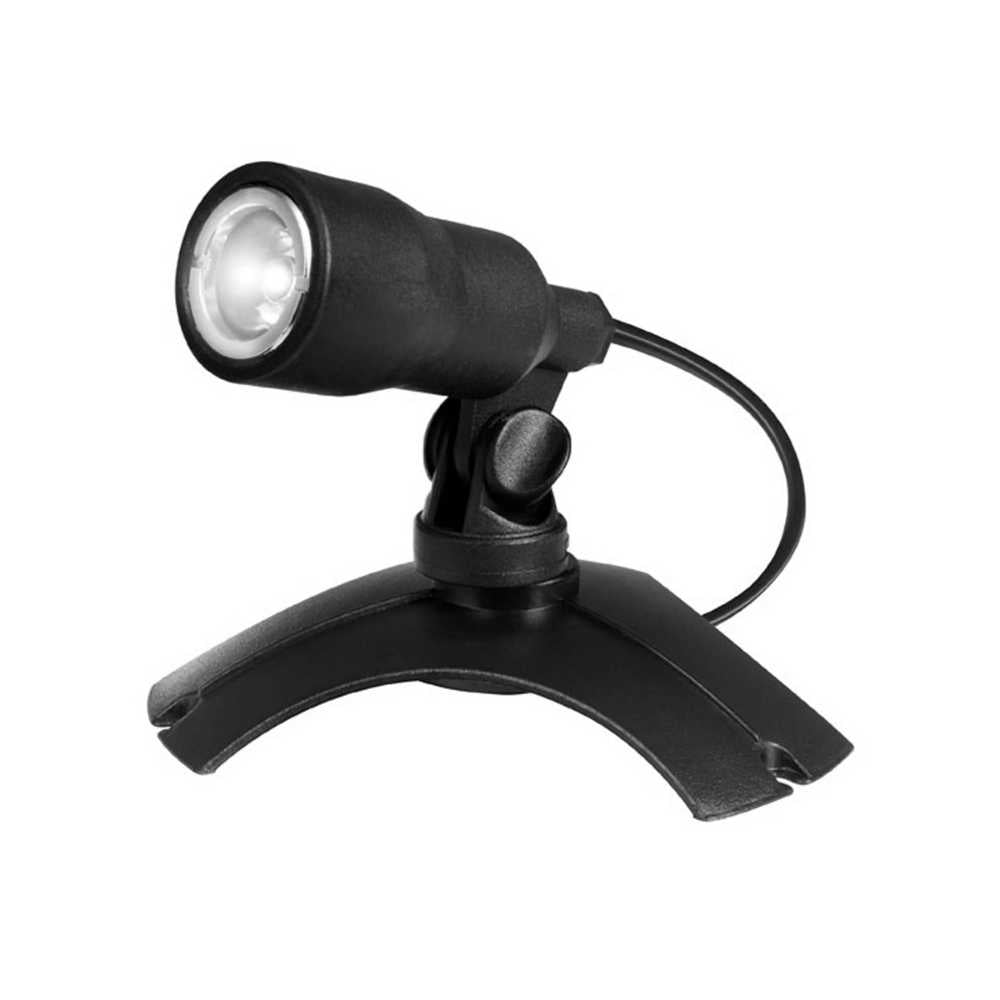- Home
- Sureguard Premium Solar Powered Snake Repellant
Sureguard Snake Repellents have been developed as a deterrent to many kinds of snakes. They emit a pulsing vibration into the surrounding soil. When the snake perceives the vibration as a source of danger most snakes will choose to avoid confrontation. (Similar principle to bushwalkers walking noisily to scare snakes away.)
This solar-powered snake repeller is both functional and attractive. Ideal for pathways and gardens as it includes beautiful LED illumination at night.
This latest release of our popular Premium model now has a Multi-Pulse feature. Every two days the vibration pattern changes. Several patterns cycle over 7-days. This can help deter snakes that encounter the repellent again.
The solar panel works in full sun or cloudy conditions and the rechargeable backup battery provides extra power during cloud or at night.
Snake Facts:
- Scientists have evidence that snakes can detect the direction of vibration!
- Vibrations as small as one billionth of a meter can be sensed by some snakes!
- Snakes hardly hear airborne sounds but are sensitive to vibration.
- Most snakes choose to avoid danger.
Snake Repellents:
- Vibrate to signal danger.
- Vibrate within the snake's pitch range.
Features:
- Multi-Pulse vibration module.
- Sureguard exclusive "Case Glow" LED Garden Night Light.
- Exclusively designed High-Powered Solar Panel.
- ON/OFF Switch independently controls both LED light and vibration.
- The rechargeable backup battery is easily replaced.
- Fully rain-proof construction.
- 30m coverage, space at 25m intervals
Specifications:
There are a number of factors to consider:
To protect one spot, one snake repellent may be sufficient.
To protect the area immediately around your house, one repellent at each corner could be enough to provide overlapping vibration between adjacent repellents. The best coverage is when the snake repellents are away from the walls, say 5m.
Protecting the whole property is also practical by forming a barrier around your fence line. The repellents are placed no more than 25m apart.
If you have snakes coming from a certain direction, for example, neighboring grassland, you could simply place the snake repellents along that boundary. The repellent action will transmit under most fences so in this way you keep the snakes off your property at a distance.
Some situations may require more repellents.
Soil types: The 25m apart is a maximum range for most soils, but for sandy soil or soil with a lot of fine stones, you should reduce this to 10m apart.
Hard objects: If you have pathways, you'll need a repellent on both sides because the vibration doesn't pass through hard objects in the ground. This applies to concrete, bitumen, gravel, pavers, etc.
Shallow topsoil: If your topsoil is shallow then reduce the separation between repellents.
Multi-level ground: You'll need snake repellents on both levels where the ground is terraced because the vibration won't travel between levels.
Soil cracks: If the soil is dry and cracked you'll need repellents on both sides because the vibration doesn't cross the gap.










